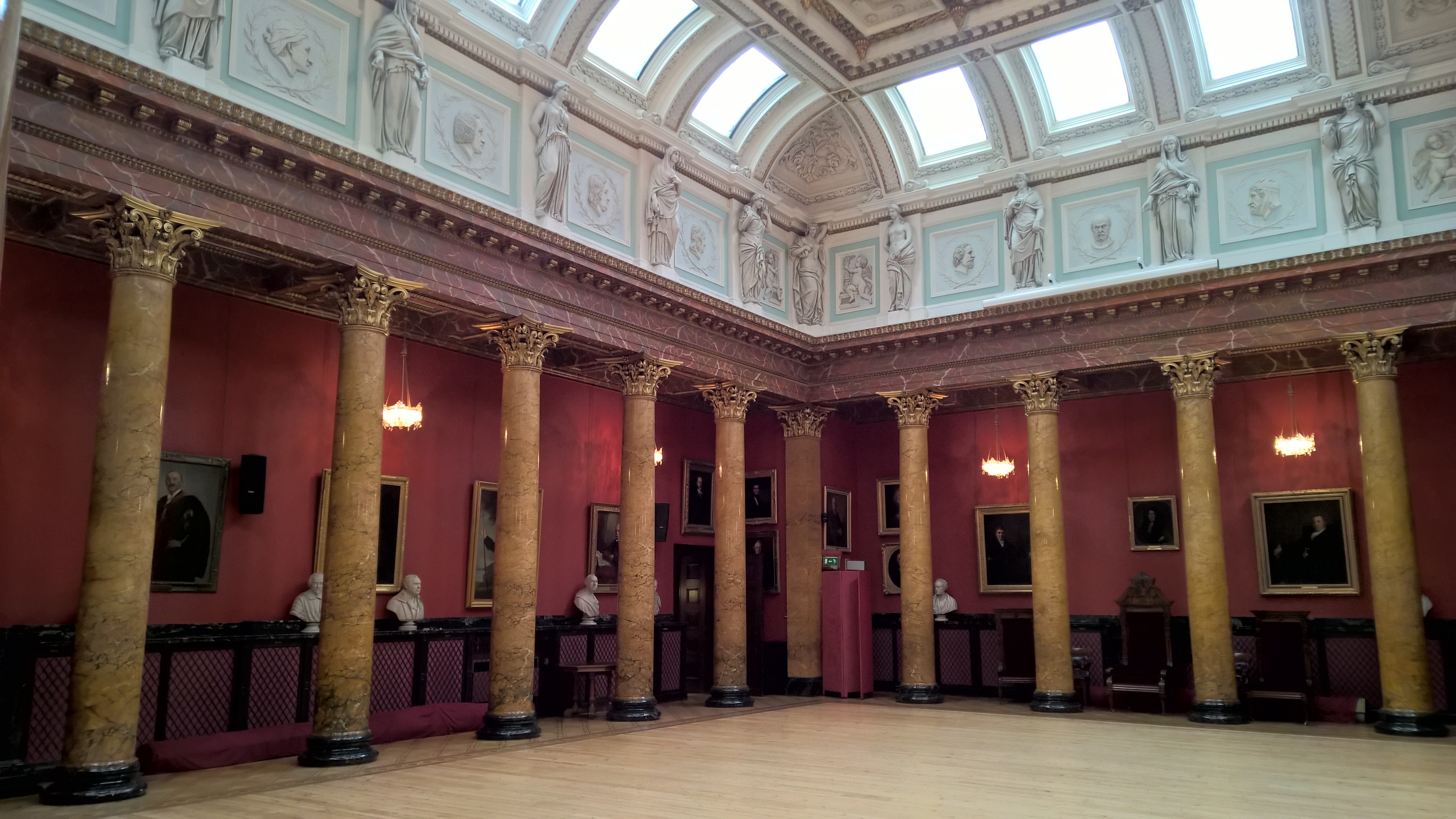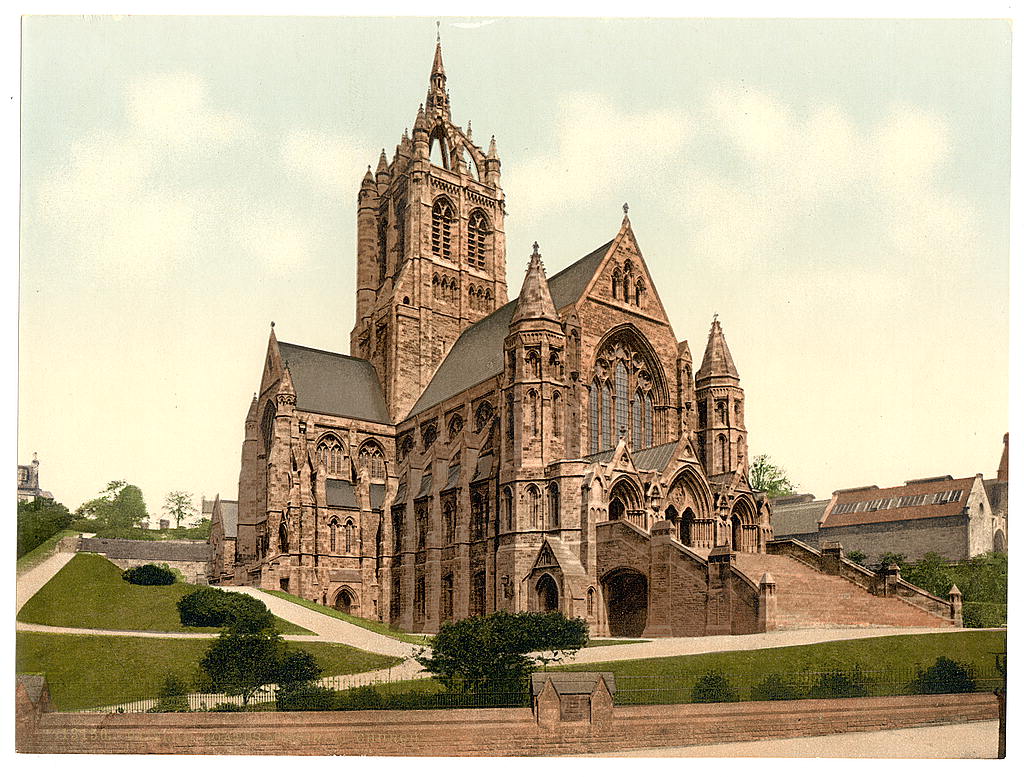|
Isabella Pringle
Isabella "Ella" Ferrier Pringle FRCPE (1 December 1876 – 27 May 1963) was the first female Fellow of the Royal College of Physicians of Edinburgh (RCPE), in 1929. She practised as a medical missionary in Manchuria before a pioneering career in child health. In official documents she is referred to as Dr I. F. Pringle. Biography Isabella Pringle was born on 1 December 1876 in Edinburgh, Scotland, the daughter of Andrew Pringle and his wife, Isabella Barbour. She worked as a typist until the age of 29, and then entered the University of Edinburgh to study medicine. She received her MBChB in 1909. She worked as a United Free Church of Scotland medical missionary in Manchuria until ill-health forced her to return to Scotland in 1916. She then studied for a Diploma in Public Health, and in 1917 was appointed the assistant medical officer for Paisley. In 1919, she became the first full-time female medical officer with responsibility for maternity and child health. From 1921 to 1 ... [...More Info...] [...Related Items...] OR: [Wikipedia] [Google] [Baidu] |
FRCPE
The Royal College of Physicians of Edinburgh (RCPE) is a medical royal college in Scotland. It is one of three organisations that sets the specialty training standards for physicians in the United Kingdom. It was established by Royal charter in 1681. The college claims to have 12,000 fellows and members worldwide. History The RCPE was formed by a royal charter, granted in 1681, with Sir Robert Sibbald recognised as playing a key part in the negotiations. Three applications preceded this and had been unsuccessful. There were 21 original Fellows, eleven of whom were graduates or students of the University of Leiden. The Universities (Scotland) Act 1858 resulted in several items from the College's Charter becoming obsolete, and they obtained a further charter on 31 October 1861. In 1920 the College enacted changes that allowed women to be admitted on the same terms as men. The charter was amended on 7 May 2005. Edinburgh Pharmacopoeia In 1699 The College first published a ... [...More Info...] [...Related Items...] OR: [Wikipedia] [Google] [Baidu] |
Paisley, Renfrewshire
Paisley ( ; sco, Paisley, gd, Pàislig ) is a large town situated in the west central Lowlands of Scotland. Located north of the Gleniffer Braes, the town borders the city of Glasgow to the east, and straddles the banks of the White Cart Water, a tributary of the River Clyde. Paisley serves as the administrative centre for the Renfrewshire council area, and is the largest town in the historic county of the same name. It is often cited as "Scotland's largest town" and is the fifth largest settlement in the country, although it does not have city status. The town became prominent in the 12th century, with the establishment of Paisley Abbey, an important religious hub which formerly had control over other local churches. By the 19th century, Paisley was a centre of the weaving industry, giving its name to the Paisley shawl and the Paisley pattern. The town's associations with political radicalism were highlighted by its involvement in the Radical War of 1820, with s ... [...More Info...] [...Related Items...] OR: [Wikipedia] [Google] [Baidu] |
Fellows Of The Royal College Of Physicians Of Edinburgh
The Royal College of Physicians of Edinburgh (RCPE) is a medical royal college in Scotland. It is one of three organisations that sets the specialty training standards for physicians in the United Kingdom. It was established by Royal charter in 1681. The college claims to have 12,000 fellows and members worldwide. History The RCPE was formed by a royal charter, granted in 1681, with Sir Robert Sibbald recognised as playing a key part in the negotiations. Three applications preceded this and had been unsuccessful. There were 21 original Fellows, eleven of whom were graduates or students of the University of Leiden. The Universities (Scotland) Act 1858 resulted in several items from the College's Charter becoming obsolete, and they obtained a further charter on 31 October 1861. In 1920 the College enacted changes that allowed women to be admitted on the same terms as men. The charter was amended on 7 May 2005. Edinburgh Pharmacopoeia In 1699 The College first published a ... [...More Info...] [...Related Items...] OR: [Wikipedia] [Google] [Baidu] |
Alumni Of The University Of Edinburgh Medical School
Alumni (singular: alumnus (masculine) or alumna (feminine)) are former students of a school, college, or university who have either attended or graduated in some fashion from the institution. The feminine plural alumnae is sometimes used for groups of women. The word is Latin and means "one who is being (or has been) nourished". The term is not synonymous with "graduate"; one can be an alumnus without graduating (Burt Reynolds, alumnus but not graduate of Florida State, is an example). The term is sometimes used to refer to a former employee or member of an organization, contributor, or inmate. Etymology The Latin noun ''alumnus'' means "foster son" or "pupil". It is derived from PIE ''*h₂el-'' (grow, nourish), and it is a variant of the Latin verb ''alere'' "to nourish".Merriam-Webster: alumnus .. Separate, but from the ... [...More Info...] [...Related Items...] OR: [Wikipedia] [Google] [Baidu] |
Medical Doctors From Edinburgh
Medicine is the science and practice of caring for a patient, managing the diagnosis, prognosis, prevention, treatment, palliation of their injury or disease, and promoting their health. Medicine encompasses a variety of health care practices evolved to maintain and restore health by the prevention and treatment of illness. Contemporary medicine applies biomedical sciences, biomedical research, genetics, and medical technology to diagnose, treat, and prevent injury and disease, typically through pharmaceuticals or surgery, but also through therapies as diverse as psychotherapy, external splints and traction, medical devices, biologics, and ionizing radiation, amongst others. Medicine has been practiced since prehistoric times, and for most of this time it was an art (an area of skill and knowledge), frequently having connections to the religious and philosophical beliefs of local culture. For example, a medicine man would apply herbs and say prayers for healing, or ... [...More Info...] [...Related Items...] OR: [Wikipedia] [Google] [Baidu] |
1963 Deaths
Events January * January 1 – Bogle–Chandler case: Commonwealth Scientific and Industrial Research Organisation scientist Dr. Gilbert Bogle and Mrs. Margaret Chandler are found dead (presumed poisoned), in bushland near the Lane Cove River, Sydney, Australia. * January 2 – Vietnam War – Battle of Ap Bac: The Viet Cong win their first major victory. * January 9 – A January 1963 lunar eclipse, total penumbral lunar eclipse is visible in the Americas, Europe, Africa, and Asia, and is the 56th lunar eclipse of Lunar Saros 114. Gamma has a value of −1.01282. It occurs on the night between Wednesday, January 9 and Thursday, January 10, 1963. * January 13 – 1963 Togolese coup d'état: A military coup in Togo results in the installation of coup leader Emmanuel Bodjollé as president. * January 17 – A last quarter moon occurs between the January 1963 lunar eclipse, penumbral lunar eclipse and the Solar eclipse of January 25, 1963, annular solar ... [...More Info...] [...Related Items...] OR: [Wikipedia] [Google] [Baidu] |
1876 Births
Events January–March * January 1 ** The Reichsbank opens in Berlin. ** The Bass Brewery Red Triangle becomes the world's first registered trademark symbol. * February 2 – The National League, National League of Professional Base Ball Clubs is formed at a meeting in Chicago; it replaces the National Association of Professional Base Ball Players. Morgan Bulkeley of the Hartford Dark Blues is selected as the league's first president. * February 2 – Third Carlist War – Battle of Montejurra: The new commander General Fernando Primo de Rivera marches on the remaining Carlist stronghold at Estella-Lizarra, Estella, where he meets a force of about 1,600 men under General Carlos Calderón, at nearby Montejurra. After a courageous and costly defence, Calderón is forced to withdraw. * February 14 – Alexander Graham Bell applies for a patent for the telephone, as does Elisha Gray. * February 19 – Third Carlist War: Government troops under General Pr ... [...More Info...] [...Related Items...] OR: [Wikipedia] [Google] [Baidu] |
Morningside Cemetery, Edinburgh
Morningside Cemetery is a cemetery in south Edinburgh. It was established in 1878 by the Metropolitan Cemetery Company, originally just outwith the then city boundary, the nearest suburb then being Morningside. It extends to just over 13 acres in area. The cemetery contains 80 war graves. Although arguably visually uninspiring the cemetery contains the graves of several important female figures; including a female air commandant, Scotland's first female surgeon, the first female Fellow of the Royal College of Physicians of Edinburgh, a Nobel Prize winner and many church missionaries. History The cemetery was soon enveloped by the city and now lies between Balcarres Street (to its north) and Morningside Drive (to its south). Its original entrance was very grand. This was off Belhaven Terrace to the east. However, although the entrance gates and railings still exist, this route is now blocked, a modern housing development, Belhaven Place, standing over the graveyard, in de ... [...More Info...] [...Related Items...] OR: [Wikipedia] [Google] [Baidu] |
The Grave Of Isabella Ferrier Pringle, Morningside Cemetery, Edinburgh
''The'' () is a grammatical article in English, denoting persons or things that are already or about to be mentioned, under discussion, implied or otherwise presumed familiar to listeners, readers, or speakers. It is the definite article in English. ''The'' is the most frequently used word in the English language; studies and analyses of texts have found it to account for seven percent of all printed English-language words. It is derived from gendered articles in Old English which combined in Middle English and now has a single form used with nouns of any gender. The word can be used with both singular and plural nouns, and with a noun that starts with any letter. This is different from many other languages, which have different forms of the definite article for different genders or numbers. Pronunciation In most dialects, "the" is pronounced as (with the voiced dental fricative followed by a schwa) when followed by a consonant sound, and as (homophone of the archaic pron ... [...More Info...] [...Related Items...] OR: [Wikipedia] [Google] [Baidu] |
Assistant Medical Officer
A clinical officer (CO) is a gazetted officer who is qualified and licensed to practice medicine. In Kenya the basic training for clinical officers starts after high school and takes four or five years ending on successful completion of a one-year internship in a teaching hospital and registration at the Clinical Officers Council where annual practice licenses are issued. This is followed by a three-year apprenticeship under a senior clinical officer or a senior medical officer which must be completed before issuance of a practising certificate and a Master Facility List number for their own private practice or before promotion from the entry level training grade for those who remain employed. A further two-year bachelor's degree level training is undertaken by those who wish to leave general practice and specialize in one branch of medicine such as paediatrics, orthopaedics or psychiatry. Unique Master Facility List numbers are generated from a national WHO-recommended dat ... [...More Info...] [...Related Items...] OR: [Wikipedia] [Google] [Baidu] |






.png)